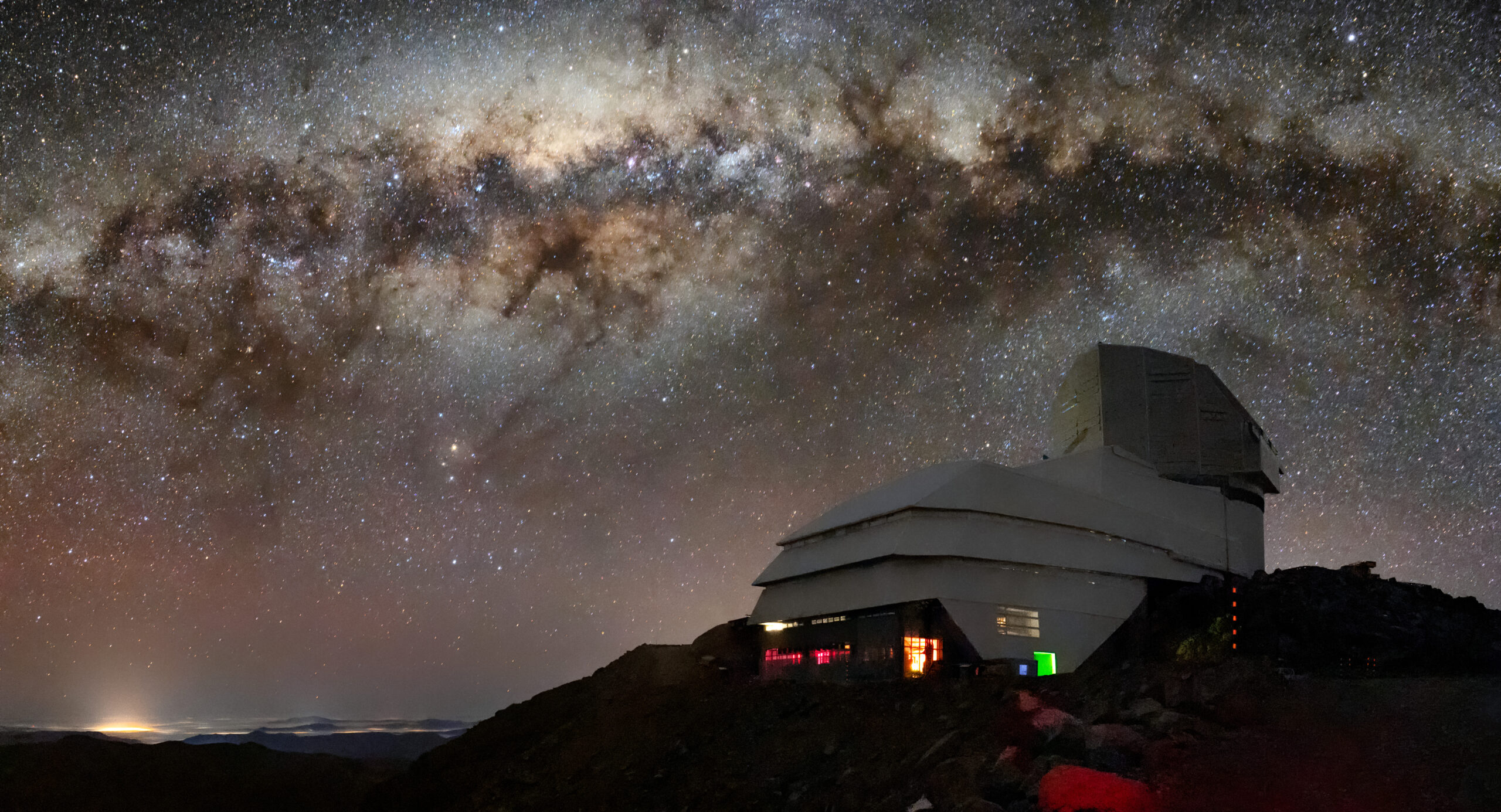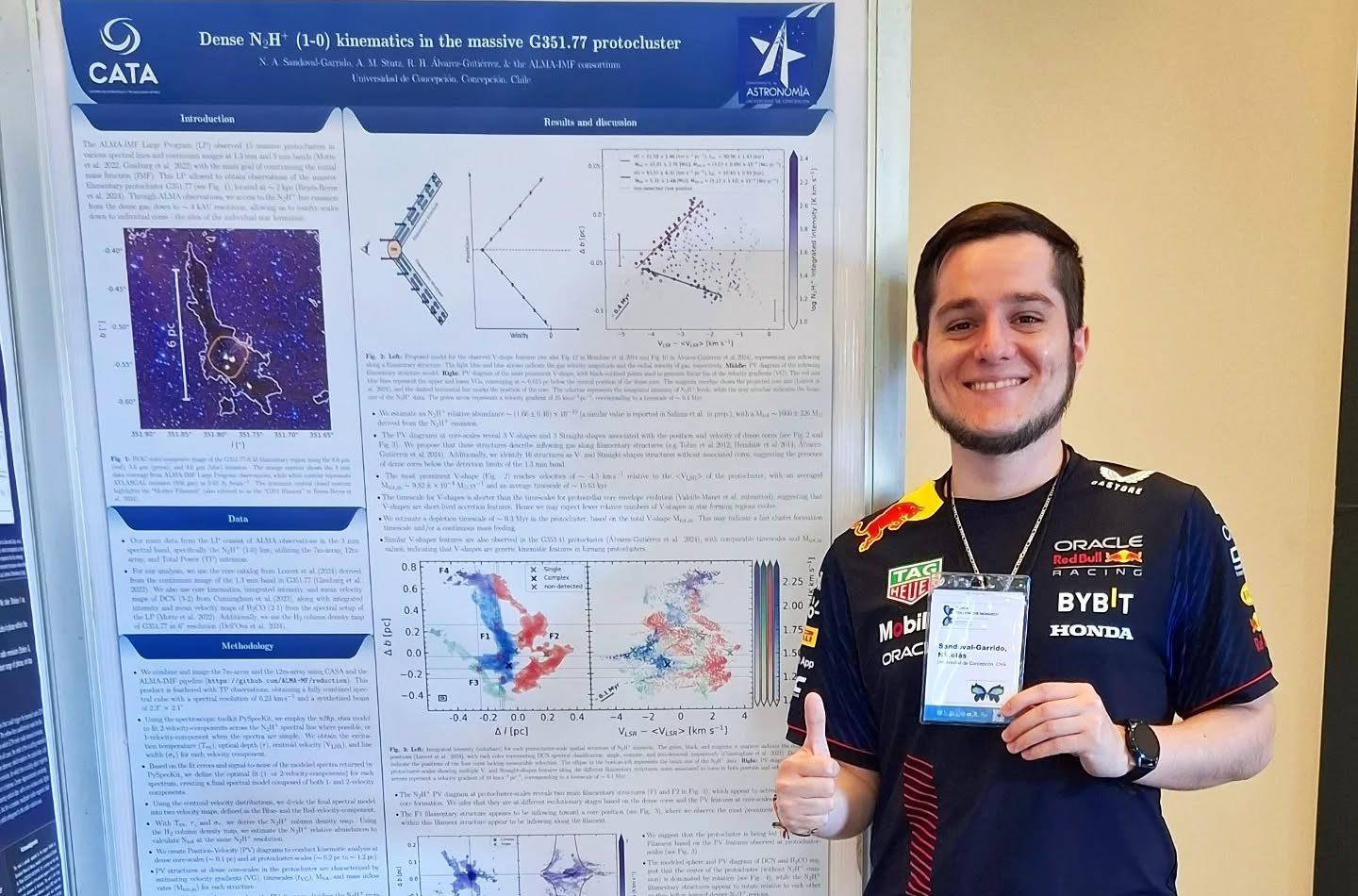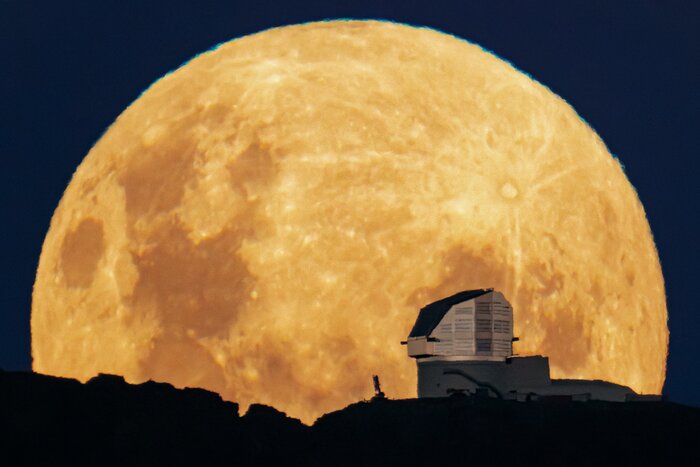
DEcam confirms that the environment of quasars in the early Universe is indeed crowded
The study would explain the contradictory conclusions existing among the various investigations carried out so far in this field and points out the reasons for the absence of galaxies in the vicinity of quasars.
A group of astronomers confirmed the expectation that quasars in the early Universe formed in regions of space densely populated by companion galaxies. This thanks to observations made with the dark energy camera (DECam), mounted on the Victor M. Blanco 4-meter telescope at the Cerro Tololo Inter-American Observatory, an NSF NOIRLab program.
The Centro de Astrofísica y Tecnologías Afines (CATA) played an important role in this process, since several astronomers from the Center are involved in this study. The research was directed by Trystan Lambert, who completed this work as a PhD student at the Instituto de Estudios Astrofísicos of the Universidad Diego Portales and also as a member of CATA. In addition, Roberto Assef and Felipe Barrientos (Principal Investigators of the Center), Manuel Aravena (CATA Associate Researcher), Jorge González and Chiara Mazzucchelli (both CATA Adjunct Researchers) actively participated.
This group of scientists conducted the largest-ever sky search around a quasar in the early Universe in an effort to measure the density of its surroundings by counting the number of surrounding companion galaxies.
DECam’s exceptionally wide field of view and special filters played a crucial role in reaching results that reveal why previous studies, which sought to characterize the density of quasar neighborhoods in the early Universe, have yielded conflicting results.
“We were able to establish that it is possible that the luminosity of the quasar is affecting its neighboring galaxies in a way that makes them difficult to find with the traditional methods that are used and that this needs much more research to be really well understood. Additionally, he points out that possibly the very disparate results in the literature are related to not covering enough area, as they typically focus on the regions affected by the quasar. The way we establish the density of the environment in which a quasar lives is by counting the number of neighboring galaxies and then comparing it to the number we would expect at an average location in the Universe. If a survey focuses on a small area near the quasar, it may not find many galaxies because of the quasar effect, even if they are really there,” says Roberto Assef.
Very luminous
Quasars are the most luminous objects in the Universe and are fueled by material that accumulates in supermassive black holes at the centers of galaxies. Studies have shown that quasars in the early Universe have black holes so massive that they must have been swallowing gas at very high rates, leading most astronomers to believe that these quasars formed in some of the densest environments in the Universe, where gas was most available. However, observational measurements seeking to confirm this conclusion have so far yielded conflicting results. Now, this study using the dark energy camera (DECam) points the way toward an explanation for these disparate observations and also a logical framework for connecting observation with theory.
For their investigation, the team needed a quasar with a well-defined distance, for which VIK J2348-3054, whose distance was determined by previous observations with the Atacama Large Millimeter/Submillimeter Array (ALMA), was used. Next, DECam’s three-square-degree field of view provided an expansive view of its cosmic neighborhood, as it is also equipped with a narrow-band filter perfectly suited to detect its companion galaxies.
This made it possible to count the number of companion galaxies around the quasar by detecting a very specific type of light they emit, known as Lyman-alpha radiation, which is a specific energy signature of hydrogen, produced when it ionizes and then recombines during the star formation process. These traces are typical in younger, smaller galaxies and their emission can be used to reliably measure their distance. They thus make it possible to construct a detailed map of a quasar’s neighborhood.
After systematically mapping the region of space around the quasar VIK J2348-3054, the researchers found 38 companion galaxies in the wider environment around it (up to a distance of 60 million light-years), which is consistent with what is expected for quasars residing in dense regions. However, they were surprised to discover that within 15 million light-years of the quasar there were no companions.
This discovery presents new questions, mainly, what creates this paucity of galaxies around the quasar?
“Of course, we don’t know for sure, but in the paper we posit that one of the possible reasons is negative feedback from the quasar, in which the quasar affects its companion galaxies, making it difficult to detect. The intensity of the quasar radiation may be large enough to influence or potentially stop star formation in these companion galaxies. This is key to producing the tracer we use to find these companion galaxies with DECam, so the lack of new stars would make them invisible to our observations,” he concludes. Roberto Assef, Principal Researcher at CATA and academic at Universidad Diego Portales.
Stars in galaxies form from gas that is cold enough to collapse under its own gravity. Luminous quasars can potentially be bright enough to illuminate this gas in nearby galaxies and heat it up, preventing this collapse.
The team is making additional observations to obtain spectra and confirm the suppression of star formation. They also plan to observe other quasars to build a more robust sample size.
They also expect productivity to be greatly amplified by the upcoming NSF-DOE Vera Rubin Observatory, a next-generation facility that will reveal even more about the early Universe and these extraordinary objects.
Recent news
-
 Publicado el: 30/06/2025CATA Director strengthens ties in her second institutional tour
Publicado el: 30/06/2025CATA Director strengthens ties in her second institutional tour -
 Publicado el: 26/06/2025Vera C. Rubin: the telescope that watches the sky and anticipates the future of astronomy
Publicado el: 26/06/2025Vera C. Rubin: the telescope that watches the sky and anticipates the future of astronomy -
 Publicado el: 25/06/2025CATA researchers appointed as Full Professors at Universidad Andrés Bello
Publicado el: 25/06/2025CATA researchers appointed as Full Professors at Universidad Andrés Bello -
 Publicado el: 25/06/2025Study by young Chilean astronomer reveals new key parameter for understanding star formation
Publicado el: 25/06/2025Study by young Chilean astronomer reveals new key parameter for understanding star formation -
 Publicado el: 19/06/2025Rubin: The Universe’s First “Movie” That Will Transform Astronomy
Publicado el: 19/06/2025Rubin: The Universe’s First “Movie” That Will Transform Astronomy
Categories list
- Acknowledgments 18
- Astrobiology 5
- AstroCluster 1
- Black holes 13
- Corporativo 49
- Cosmology 4
- Descubrimientos 19
- Disclosure 45
- Exoplanets 13
- Extension 4
- Galaxies 17
- Galaxies formation 2
- Inter y Transdisciplina 2
- Local Universe 13
- Publications 5
- Sin categorizar 31
- Solar System 11
- Stellar formation 6
- Technology 9
- Technology Transfer 12
